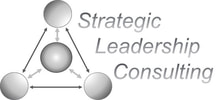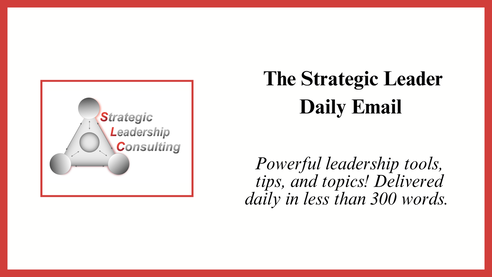|
Colleagues,
Last week, I was out in the garden transplanting some very small lettuce seedlings when my neighbor’s two children came by. Of course, they wanted to help. I knew it would go faster if I did it all myself, but how do you refuse the help of two bright-eyed and eager young people? We proceeded to plant out the seedlings and water them. Five things:
Do good and be well, Frederick
0 Comments
Colleagues,
Even with my little greenhouse, my tomatoes and cucumbers didn’t grow this winter. It just wasn’t the right time. Our ideas for change are the same way. Change pursued at the wrong time is likely to fail, but change at the right time will yield positive results. Of course, the trick is knowing when the right time is for change. Do good and be well, Frederick Colleagues,
Wu-wei is the Taoist philosophy of acting without acting. Taken loosely, we can think of it as putting things in motion, or of being a catalyst. A small action at the beginning can have a big effect later. Some examples:
Strategic leaders are mindful of opportunities to set up other people for success by taking small, effortless actions. Do good and be well, Frederick Colleagues,
Yesterday I wrote about meal planning for my upcoming Foothills Trail hike. I pointed out that the difference between quadrant 1 and 2 is often times the deadline. I also said that I was likely to spend the same amount of time on the task whether I did it in advance (quadrant 2) or at the last minute (quadrant 1). However, that isn’t entirely true. The problem with investing on the front end is that, without the stress of a deadline, we tend to make things more complicated. If I am out of time, my product or solution is likely to be simpler than if I had begun weeks early. Some of my shortest daily messages are composed when I am pressed by the deadline, and the impact of the message is not always reflective of how long it took me to write it. Strategic leadership is as much a way of thinking as it is doing. As strategic leaders, we should consistently be thinking about how to achieve our goals with a minimally viable plan or product (MVP). The challenge for me is that I like to geek out, so I need to guard against clicking on 100 different websites, looking at gourmet backpacking meals with exotic ingredients, and dreaming about being a chef. If I can stay strategic with my meal planning, I will focus on getting the most calories with the least weight, easy preparation, and acceptable taste. Do good and be well, Frederick Colleagues,
Next week, Pam and I will be heading out on a 77-mile hike of the Foothills Trail. Our equipment doesn’t change much from trip to trip, so our packs are ready. The challenge is the menu. We will be burning a lot of calories and food can be heavy. We’ve never been out for seven days in a row, so planning and preparing our menu feels daunting. I do have a set list of meals to build around, and we picked up some freeze-dried dinners from REI a couple of weeks ago. I have also been doing some reading, so we are making progress. Right now, getting the food ready is important, but not urgent (quadrant 2). I have five days left to fill in the holes. I enjoy the meal planning and, as is often the case when working in quadrant 2, I feel energized after making some progress. That said, if I still have a lot to figure out on Thursday, the task will become urgent in addition to being important. This will bring stress and planning the meals won’t be fun anymore. Sometimes the difference between quadrant 1 and 2 is simply the deadline. The irony is that I will likely invest the same amount of time in the task. If I do it ahead of time, it can energize me. If I wait until the last minute, it stresses me out. Do good and be well, Frederick |
Categories
All
Archives
July 2024
|


 RSS Feed
RSS Feed